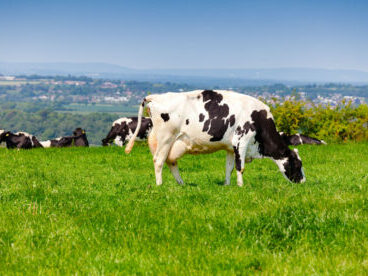For beef producers, achieving the twin goals of adequate carcase finish and target weight in the optimum time is a major driver of profitability.
Feeding fats to beef delivers excellent returns
For beef producers, achieving the twin goals of adequate carcase finish and target weight in the optimum time is a major driver of profitability. Feeding rumen-inert fatty acids to growing and finishing cattle can have a big impact on both growth rates and feed efficiency which together will boost margins.
“To maximise margins, cattle need to finish quickly whilst hitting the specification for age, weight and fat class,” David Bonsall from UFAC explains. “Central to achieving this is feeding adequate fat in the diet of both growing and finishing animals.”
AHDB Better Returns Programme (BRP) recommendations are that growing cattle diets contain a maximum of 3% fat, while for finishers this increases up to 6% alongside higher sugar and starch levels and reduced protein. In reality, many diets fail to achieve these levels, resulting in poorer performance.
Increase energy density
“While all beef producers understand the importance of increasing energy intakes and energy density in finishing cattle, the crucial role of fats and in particular specific fatty acids are not so well understood.
“With finishing weights being reduced, many farmers are struggling to get cattle to finish on high starch diets. At the same time, higher starch brings an increased risk of acidosis which will reduce dry matter intakes and growth rates. The correct fat sources can have a tremendous role to play here.
“Fats are higher in energy than any other feed ingredient for beef diets, with over two and a half times the net energy content of cereals, and so will increase energy density. When rumen inert fats are used there is acid loading meaning they support higher total energy and dry matter intakes. “But this is only half the story. Different fatty acids carry out different roles in the animal and to optimise performance it is about feeding enough of the right fats.”
Feed efficiency is a major measure of beef systems. Oleic acid (C18:1) increases the efficiency of digestion of all the fat in the diet in the small intestine, increasing overall feed efficiency, making more energy available for use by the animal and supporting higher feed conversion.
Strong immune system
The other fatty acids which have a big impact on the performance of both growing and finishing cattle are EPA and DHA. They have an active role in strengthening the immune system. Whenever an animal experiences a health challenge, large amounts of energy are diverted to the immune system and away from growth. If the immune system is stronger, fewer health challenges will occur meaning more energy for growth.
The other reason for feeding optimum levels of dietary fat is improving carcase grading. While there is less demand for marbling, processors still require a level of sub-cutaneous fat.
Balanced blend
UFAC Megajule is a unique blend of specially selected rumen-inert fatty acids, which are perfect for beef cattle. It contains the essential fatty acids Linoleic and Linolenic, plus EPA and DHA from marine, along with Oleic acid, which ensure a balanced fatty acid profile to maximise feed conversion, DLWG and total energy supply.
Results from farm studies show the impact of adding Megajule to the diets of growing and finishing cattle as a straight replacement for some of the cereals in the diet.
“By driving growth rates and improving carcase grading margin per animal is increased by £52, giving nearly a 2:1 Return on Investment.”


 Back to News
Back to News 



